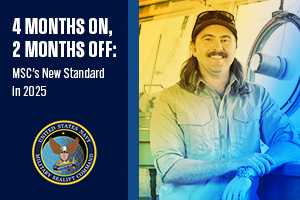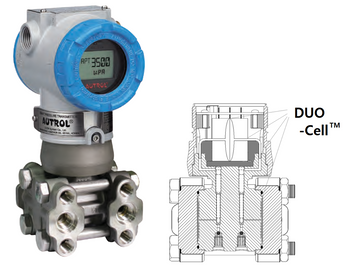New App Teaches COLREGs

Columbia Group has launched a mobile and web-based app designed to teach the International Regulations for Preventing Collisions at Sea (COLREGs).The COLREGs Challenge is an educational tool which uses gameplay to turn regulatory learning into an immersive, interactive experience.Targeted at cadets, junior officers, and developed in collaboration with 4Growth.com BV, the app presently includes more than 20 interactive modules covering practical maritime scenarios. More modules will be introduced soon.Themed campaigns cover basic navigation…
Pilot Overcompensating for Crosscurrents Led to Bridge Contact

Anticipating a strong cross-current that never materialized, an experienced tow pilot deviated from the sailing line on the Mississippi River and struck components of the Fort Madison Bridge near Fort Madison, Iowa, the National Transportation Safety Board has concluded.The towing vessel Joe B. Wyatt was pushing 13 loaded hopper barges and two empty tank barges downriver on May 9, 2024, when the tow struck the bridge’s protection cell and fendering system and broke apart.No injuries or pollution were reported. Damage to the protection cell, fendering system, barges and the Joe B.
The Challenges for Watchkeepers Continue

This week MarineLink reported on the NTSB’s analysis of a 2024 collision on the lower Mississippi that resulted from a tow pilot’s distraction caused by personal cellphone use.While navigating the tow for about 1.5 hours before the collision, the pilot engaged in non-operational, secondary tasks, including taking an administrative phone call from the company’s safety officer, making a personal phone call and sending text messages.The pilot had only had about four hours of continuous sleep in the 36 hours before the collision…
Poor Welding Blamed after Rudder Falls off Bulk Carrier
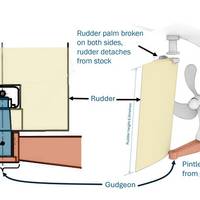
A cargo ship narrowly avoided grounding after its rudder fell off, and New Zealand’s TAIC report highlights the need for careful oversight and quality assurance during installation of safety-critical components and for strong international safety standards.On 24 July 2023, the cargo ship Achilles Bulker, fully loaded and under pilotage, was outbound from Tauranga.The ship deviated from the center of the channel shortly after clearing the harbor entrance. As the crew and onboard pilots tried to steer it back on course, the ship’s rudder broke off.
Furuno Releases Advanced Charting Platform

Furuno has introduced TZ MAPS on its NavNet TZtouchXL system, delivering what it calls the most advanced and customizable charting platform ever developed for recreational and professional mariners.TZ MAPS unlocks new features on TZtouchXL multi-function displays, including AI Routing, AI Avoidance Route™ and BathyVision™.TZ MAPS is built from official hydrographic data, high-resolution bathymetry, satellite imagery and crowd-sourced surveys. It has a Community Maps feature which empowers users to contribute local knowledge by creating and editing chart objects…
Tow Collision: Fatigued Pilot Distracted by Phone

A tow pilot’s distraction caused by personal cellphone use resulted in a collision last year with moored barges on the lower Mississippi River, according to the National Transportation Safety Board.The towing vessel William B Klunk was pushing 22 loaded hopper barges on April 17, 2024, when the tow collided with moored barges at a fleeting area near Baton Rouge. Thirteen barges broke away from the William B Klunk tow and three barges broke away from the fleeting area, resulting in damage to the barges, a fleet crew boat and two mooring dolphins.
Quantum Navigation Technology Proven at Sea
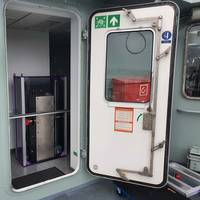
Australian quantum software company Q-CTRL has demonstrated its software-ruggedized quantum sensing for navigation technology in a major field trial onboard the Royal Australian Navy’s multi-role aviation training vessel, MV Sycamore.Quantum navigation promises a robust and reliable GPS backup that cannot be jammed or spoofed.Q-CTRL deployed a quantum dual gravimeter, which measures tiny variations in Earth’s gravity as part of a next-generation quantum-assured positioning, navigation and timing (PNT) system operable when GPS is unavailable or untrusted.In quantum gravimetric navigation…
Anschütz Introduces Autonomous Navigation and Command System
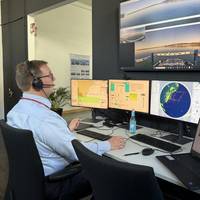
Anschütz has designed an integrated Autonomous Navigation and Command System for naval vessels. Using proven, readily available and type-approved components, it provides navies with enhanced safety and sustainable capability for unmanned systems, all the while retaining full technological sovereignty.Scalable from assistance systems to highly automated solutions, and from the monitoring and control of unmanned surface vessels (USVs) to automation solutions for large combatants…
Sperry Marine Delivers Terma Surveillance Radar System Delivers to Canadian Coast Guard
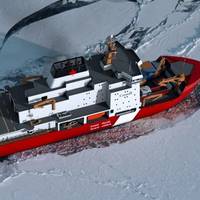
Terma A/S, a leader in surveillance radar technology, has partnered with Sperry Marine, a manufacturer and service provider of marine navigation systems, to deliver the SCANTER 4603 and SCANTER 6002 series of naval surveillance radar to Seaspan Shipyards for the upcoming Canadian Coast Guard’s Multi-Purpose Icebreaker and Polar Icebreaker Programs.This milestone underscores the ongoing partnership between Sperry Marine and Terma A/S and the two companies’ commitment to empowering the Canadian Coast Guard with radar technology designed for precision situational awareness…
S-100 has Value Beyond ECDIS
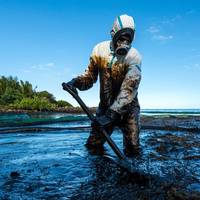
The S-100 framework is a new global standard created by the International Hydrographic Organization (IHO), in collaboration with other hydrographic offices around the world, that enables the integration of diverse datasets within a single Electronic Chart Display and Information System (ECDIS).Mariners will be able to combine various data layers with Electronic Navigational Charts including detailed depth information and dynamic information on tides and currents.S-100 builds on the digital foundation of S-57, the standard for electronic navigational charts since 1992.
Towing Vessel Runs Aground Despite Hazard Visible on Chart
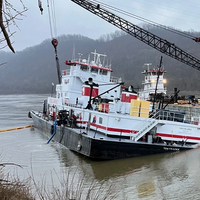
A towing vessel grounded on a submerged jetty last year after the captain maneuvered too close to a bank of the Ohio River, the National Transportation Safety Board concluded in its analysis of the incident.The towing vessel Tom Frazier was pushing 15 empty hopper barges near Portsmouth, Ohio, on Feb. 10, 2024, when the vessel grounded, damaging the vessel’s hull plating, framing and bulkheads and flooding several spaces. The nine-person crew was safely evacuated to shore. An estimated five gallons of oil were released and the vessel sustained damage estimated at more than $250…
Kongsberg's Motion Gyro Compasses Offer Safeguard Against GNSS Disruption

At a time when GNSS (Global Navigation Satellite System) reception face growing threats from jamming and spoofing, having a navigation system that doesn’t solely rely on satellite signals has become vital for critical maritime operations. With real-world disruptions increasingly affecting shipping and aviation safety, Kongsberg Discovery’s MGCs (Motion Gyro Compasses) deliver reliability, accuracy and resilience in contested environments. Jamming disrupts GNSS signals, limiting access to satellite-based positioning.
Unattended Helm Leads to Grounding of Towing Vessel
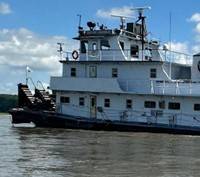
A pilot of a towing vessel on the Mississippi River left the helm unattended for several minutes, leading to a grounding near Thebes, Illinois, the National Transportation Safety Board (NTSB) has concluded.While the towing vessel City of Louisville was upbound on the Mississippi River pushing 11 barges on July 29, 2023, it ran aground in a charted shallow and rocky area. The grounding caused fractures to the vessel’s bottom plating underneath the engine room, leading to water flooding into the engine room, machinery and aft accommodation spaces.
Steering Failure Caused Vessel to Make Contact with Navigational Aid
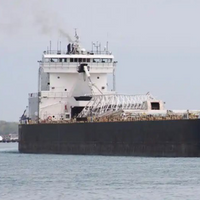
A steering system failure led to a bulk carrier’s contact with a navigational aid in the St. Marys River near Sault Ste. Marie, Michigan, according to the National Transportation Safety Board.The bulk carrier American Mariner struck the Munuscong Channel Junction Light on March 28, 2024, as it was transiting upbound in the St. Marys River. The Munuscong Channel Junction Light is comprised of a navigational light and signal mounted on a concrete, fixed structure.After the contact the vessel began taking on water but was stabilized using pumps.
Satellites Help NOC Track Tidal Change for Safer Port Operations
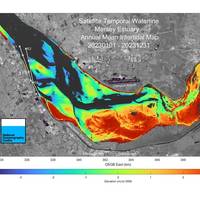
Scientists at the UK’s National Oceanography Centre (NOC) in Liverpool have used satellite data to create insight into the Mersey River that will help port operators be smarter about managing complex navigation channels. Through a project focused on Liverpool’s famous river and funded by the UK Space Agency, NOC’s scientists showed that changes in areas exposed at low tide can be mapped from space.The project, run in partnership with the Channel Coastal Observatory (CCO) and Peel Ports Group…
Quantum Sensing Beats GPS-Denied Navigational Challenges

The same error-prone sensitivity that has slowed down the development of quantum computers is being turned into an advantage for GPS-denied navigation.A new quantum sensing technology from Australia-based Q-CTRL has most recently caught the interest of Lockheed Martin and the US Defense Innovation Unit, but the company is already working with the Australian Department of Defence, the UK Royal Navy, the US Department of Defense and Airbus.These agencies are interested in a quantum-sensing-based navigation system…
HD Hyundai and Maersk Cooperate on Decarbonization and Logistics
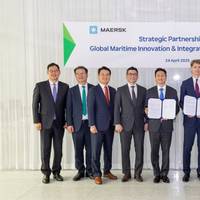
HD Hyundai and A.P. Moller - Maersk have signed an Memorandum of Understanding (MoU) to establish a collaboration on decarbonization solutions for vessels, while HD Hyundai plans to expand the use of Maersk’s integrated logistics services across its affiliates.Since 2021, HD Hyundai has received orders for a total of 19 methanol-powered container ships from Maersk. Last year, the company successfully delivered the world’s first methanol-powered ultra-large container ship, continuing its collaboration with Maersk in the field of decarbonization of shipbuilding and shipping industry.Initially…
Palfinger Marine to Deliver Eight Cranes for Brazilian Inland Navigation Vessels
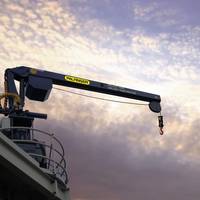
PALFINGER MARINE will deliver eight Stiff Boom Cranes PS 15500M for four inland navigation vessels to the Brazilian shipyard Estaleiro Rio Maguari (ERM). This contributes to the optimization of inland navigation in Latin America (LATAM) along the Paraguay-Paraná waterway. The cooperation between PALFINGER MARINE and ERM is part of a large-scale inland waterway transport project led by LHG Logística, the logistics arm of the Brazilian mining company LHG Mining. The project includes the construction of 400 barges and 15 pusher boats to support iron ore transport.In the future…
Exail: Order Intake Surges More Than 500%
French high-tech industrial group Exail Technologies on Wednesday reported a 519% rise in its order intake in the first quarter of the year, driven by higher defence spending by European governments.The maker of underwater drones and navigation equipment said its order intake for the first quarter totalled 487 million euros ($554.30 million), boosted by a new contract for drone systems worth several hundred million euros.The company did not give further details on the deal, announced in February, when it said it was placed by a "leading Navy".Exail is the latest small defence tech supplier propelled by prospects of a military ramp-up in Europe as the region increases its defence budgets…
Seaspan Corporation Integrates Orca AI's SeaPod Across Fleet
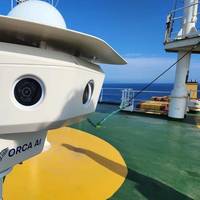
Orca AI celebrated a milestone as Seaspan Corporation, a global containership powerhouse, integrates its SeaPod digital watchkeeper across its entire fleet to support safety improvements and operational cost savings.As part of its digitalization strategy, Seaspan began using Orca AI's SeaPod digital watchkeeper on select vessels to enhance situational awareness for navigation. An analysis of Seaspan’s fleet performance from 2023−2024 revealed positive results: a 35% increase in the minimum average distance between vessels in open waters and a 37% decrease in close encounters.By using Orca AI…
UN: Freedom of Navigation in the Black Sea is Crucial to Global Food Security

An agreement on freedom of navigation in the Black Sea to ensure the protection of civilian vessels and port infrastructure "will be a crucial contribution to global food security and supply chains," U.N. spokesperson Stephane Dujarric said on Wednesday.The United States announced separate agreements with Ukraine and Russia on Tuesday to pause their strikes in the Black Sea and against each other's energy targets, but the rhetoric from Moscow and Kyiv suggested they remained far apart.The United Nations has been working consistently on the issue, Dujarric said, especially since U.N.
“Bank Effect” Caused Tanker to Strike Pier
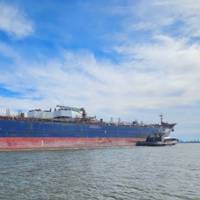
A tank vessel struck a pier at Joint Base Charleston’s Naval Weapons Station in South Carolina after a pilot allowed the vessel to get too close to a riverbank, the National Transportation Safety Board (NTSB) said Wednesday.The 604-foot-long tanker Hafnia Amessi struck Naval Weapons Station Pier B while transiting the Cooper River on January 14, 2024. A Charleston Branch Pilots Association pilot was navigating the vessel, which sustained damage to its side hull plating. The contact resulted in $8.1 million in damages to the vessel and pier.
Explainable AI for Autonomous Ship Navigation Aims to Increase Trust
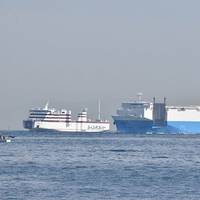
The Titanic sunk 113 years ago on April 14-15 after hitting an iceberg, with human error likely causing the ship to stray into dangerous waters. Today, autonomous systems built on artificial intelligence (AI) could help ships avoid such accidents, but could such a system explain to the captain why it was maneuvering a certain way?That’s the idea behind explainable AI which should help human actors trust autonomous systems more.Researchers from Osaka Metropolitan University’s Graduate…



